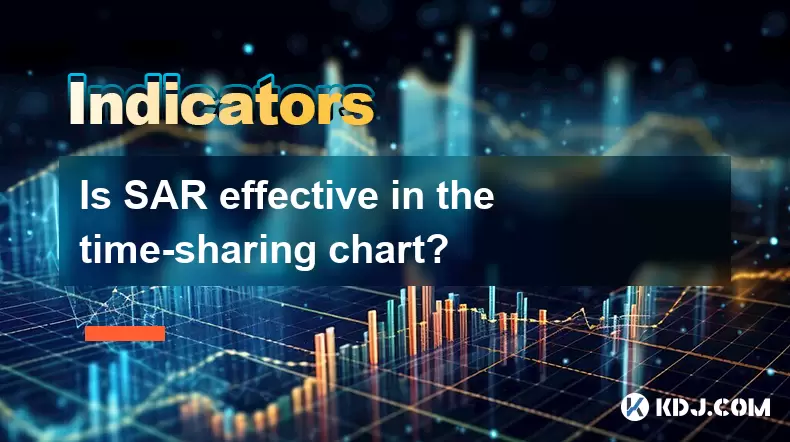-
 Bitcoin
Bitcoin $117900
-2.85% -
 Ethereum
Ethereum $4559
-2.84% -
 XRP
XRP $3.068
-5.67% -
 Tether USDt
Tether USDt $1.000
0.02% -
 BNB
BNB $836.7
-0.81% -
 Solana
Solana $193.2
-2.38% -
 USDC
USDC $0.9998
0.00% -
 TRON
TRON $0.3591
-0.32% -
 Dogecoin
Dogecoin $0.2238
-7.20% -
 Cardano
Cardano $0.9090
4.71% -
 Chainlink
Chainlink $22.55
-4.36% -
 Hyperliquid
Hyperliquid $44.78
-2.41% -
 Sui
Sui $3.771
-4.47% -
 Stellar
Stellar $0.4199
-6.18% -
 Bitcoin Cash
Bitcoin Cash $587.8
-5.02% -
 Ethena USDe
Ethena USDe $1.001
-0.01% -
 Hedera
Hedera $0.2493
-5.06% -
 Avalanche
Avalanche $23.66
-5.54% -
 Litecoin
Litecoin $121.0
-6.80% -
 Toncoin
Toncoin $3.383
-2.39% -
 UNUS SED LEO
UNUS SED LEO $9.287
0.47% -
 Shiba Inu
Shiba Inu $0.00001286
-6.48% -
 Uniswap
Uniswap $10.94
-9.06% -
 Polkadot
Polkadot $3.979
-5.53% -
 OKB
OKB $96.24
-3.88% -
 Dai
Dai $0.9997
0.00% -
 Bitget Token
Bitget Token $4.570
-4.16% -
 Cronos
Cronos $0.1510
-8.87% -
 Ethena
Ethena $0.7251
-6.96% -
 Aave
Aave $310.8
-4.73%
Is SAR effective in the time-sharing chart?
SAR is effective on time-sharing charts for crypto trading, especially in short-term frames, but combine with other indicators to minimize false signals.
May 22, 2025 at 09:00 am

Understanding SAR and Its Application in Cryptocurrency Trading
The Parabolic Stop and Reverse (SAR) indicator, commonly known as SAR, is a popular tool among traders for determining potential reversals in price trends. In the context of cryptocurrency trading, SAR can be particularly useful due to the volatile nature of digital assets. This article delves into the effectiveness of SAR when applied to time-sharing charts, a common visualization method in cryptocurrency trading.
What is the Parabolic SAR Indicator?
The Parabolic SAR is a technical analysis tool designed to provide entry and exit points for trades. It appears as a series of dots placed either above or below the price line on a chart. When the dots are below the price, it indicates an uptrend, suggesting a buy signal. Conversely, when the dots are above the price, it signals a downtrend, indicating a sell signal.
SAR is calculated using the following formula:
[ SAR_{n+1} = SAR_n + AF \times (EP - SAR_n) ]
Where:
- ( SAR_n ) is the current SAR value.
- ( AF ) is the acceleration factor, which starts at 0.02 and increases by 0.02 each time a new extreme point (EP) is established, up to a maximum of 0.20.
- ( EP ) is the highest high or lowest low of the current trend.
SAR on Time-Sharing Charts
Time-sharing charts, also known as time and sales charts, display the price movement of an asset over specific time intervals, such as minutes or hours. These charts are essential in cryptocurrency trading, where rapid price movements are common. The effectiveness of SAR on these charts depends on several factors, including the time frame used and the volatility of the asset.
Effectiveness of SAR in Short-Term Time Frames
In short-term time frames, such as 1-minute or 5-minute charts, SAR can be highly effective for identifying quick entry and exit points. The rapid nature of these charts means that traders need to act swiftly to capitalize on short-term trends. SAR's ability to adjust its position based on the most recent price action makes it a valuable tool for such time frames.
- Identify the trend: Look for the SAR dots to be below the price for an uptrend or above the price for a downtrend.
- Enter the trade: Buy when the price moves above the SAR dot in an uptrend, or sell when the price moves below the SAR dot in a downtrend.
- Monitor the trade: Keep an eye on the SAR dots as they move. If the dots switch positions, it may signal a trend reversal.
- Exit the trade: Close the position when the price crosses the SAR dot in the opposite direction of your trade.
Effectiveness of SAR in Longer-Term Time Frames
In longer-term time frames, such as 1-hour or 4-hour charts, SAR can still be effective but may provide fewer signals due to the slower pace of price movement. In these cases, SAR is better suited for identifying broader trends rather than short-term fluctuations.
- Identify the trend: As with short-term charts, look for the position of the SAR dots relative to the price.
- Enter the trade: Use the same entry signals as in short-term charts, but be prepared for longer holding periods.
- Monitor the trade: Pay attention to the overall trend rather than short-term price movements.
- Exit the trade: Close the position when the SAR indicates a reversal, which may take longer to manifest in longer-term charts.
Limitations and Considerations
While SAR can be effective in time-sharing charts, it is not without limitations. One key consideration is the potential for false signals, especially in highly volatile markets. Cryptocurrency markets are known for their volatility, which can lead to whipsaws where the price quickly moves back and forth across the SAR dots, resulting in multiple false signals.
Additionally, SAR is best used in conjunction with other technical indicators to confirm signals. Combining SAR with indicators like the Moving Average Convergence Divergence (MACD) or the Relative Strength Index (RSI) can help filter out false signals and improve the accuracy of trade entries and exits.
Practical Application: Using SAR in a Cryptocurrency Trading Strategy
To illustrate the practical application of SAR on time-sharing charts, consider the following example of a trading strategy for Bitcoin (BTC) on a 15-minute chart:
- Set up the chart: Open a 15-minute time-sharing chart for BTC/USD.
- Add the SAR indicator: Apply the SAR indicator to the chart, ensuring the default settings are used (initial AF of 0.02, maximum AF of 0.20).
- Identify the trend: Observe the position of the SAR dots. If they are below the price, it indicates an uptrend.
- Enter the trade: When the price moves above a SAR dot during an uptrend, consider entering a long position.
- Set stop-loss and take-profit levels: Place a stop-loss order just below the most recent SAR dot to limit potential losses. Set a take-profit level based on your risk-reward ratio.
- Monitor the trade: Keep an eye on the SAR dots and the price action. If the SAR dots move above the price, it may signal a trend reversal.
- Exit the trade: Close the long position when the price crosses below the SAR dot, indicating a potential downtrend.
Frequently Asked Questions
Q: Can SAR be used effectively on all time frames in cryptocurrency trading?
A: While SAR can be used on various time frames, its effectiveness varies. It is generally more effective on shorter time frames for quick trades and less effective on longer time frames where fewer signals are generated.
Q: How can I minimize false signals when using SAR on time-sharing charts?
A: To minimize false signals, combine SAR with other technical indicators such as MACD or RSI. These indicators can help confirm the signals provided by SAR, reducing the likelihood of acting on false signals.
Q: Is SAR suitable for all types of cryptocurrencies?
A: SAR can be applied to all types of cryptocurrencies, but its effectiveness may vary depending on the asset's volatility. Highly volatile cryptocurrencies may generate more false signals, requiring careful use of additional indicators for confirmation.
Q: Can SAR be used as a standalone indicator in cryptocurrency trading?
A: While SAR can provide valuable insights, it is generally not recommended to use it as a standalone indicator. Combining SAR with other indicators and analysis methods can improve the accuracy of trade signals and enhance overall trading performance.
Disclaimer:info@kdj.com
The information provided is not trading advice. kdj.com does not assume any responsibility for any investments made based on the information provided in this article. Cryptocurrencies are highly volatile and it is highly recommended that you invest with caution after thorough research!
If you believe that the content used on this website infringes your copyright, please contact us immediately (info@kdj.com) and we will delete it promptly.
- Kazakhstan's Crypto Leap: Bitcoin ETF and Central Asia's Digital Finance Future
- 2025-08-13 12:45:19
- BlockDAG Presale Blazes Past $371M: Fundraising Frenzy Fuels Crypto Sensation
- 2025-08-13 13:05:21
- Meme Coins: Chasing the 2025 Surge – Which Will Moonshot?
- 2025-08-13 10:25:23
- Bitcoin's Wild Ride: Rally, Pullback, and What's Next
- 2025-08-13 10:25:23
- Bitcoin, Bitmax, and Institutional Demand: A New Era of Crypto Investment
- 2025-08-13 10:45:12
- Solana, ROAM, and Airdrops: What's the Buzz in 2025?
- 2025-08-13 11:35:13
Related knowledge

What does it mean when the +DI and -DI cross frequently in the DMI indicator but the ADX is flattening?
Aug 11,2025 at 03:15am
Understanding the DMI Indicator ComponentsThe Directional Movement Index (DMI) is a technical analysis tool composed of three lines: the +DI (Positive...

What does the sudden appearance of a "dark cloud cover" candlestick pattern during an uptrend indicate?
Aug 13,2025 at 11:35am
Understanding the 'Dark Cloud Cover' Candlestick PatternThe dark cloud cover is a bearish reversal pattern in technical analysis that typically appear...

What does it mean when the moving average, MACD, and RSI all send buy signals simultaneously?
Aug 11,2025 at 01:42pm
Understanding the Convergence of Technical IndicatorsWhen the moving average, MACD, and RSI all generate buy signals at the same time, traders interpr...

What does it mean when both the KDJ indicator and the RSI show overbought signals simultaneously?
Aug 13,2025 at 11:35am
Understanding the KDJ Indicator in Cryptocurrency TradingThe KDJ indicator is a momentum oscillator derived from the Stochastic Oscillator, widely use...

What does it mean when the price is trading above the SAR indicator but the red dots are densely packed?
Aug 09,2025 at 11:49pm
Understanding the SAR Indicator and Its Visual SignalsThe SAR (Parabolic Stop and Reverse) indicator is a technical analysis tool used primarily to de...

What does it mean when the candlestick chart forms a "Morning Star" but trading volume is sluggish?
Aug 12,2025 at 06:28pm
Understanding the Morning Star Candlestick PatternThe Morning Star is a three-candle bullish reversal pattern commonly observed in cryptocurrency pric...

What does it mean when the +DI and -DI cross frequently in the DMI indicator but the ADX is flattening?
Aug 11,2025 at 03:15am
Understanding the DMI Indicator ComponentsThe Directional Movement Index (DMI) is a technical analysis tool composed of three lines: the +DI (Positive...

What does the sudden appearance of a "dark cloud cover" candlestick pattern during an uptrend indicate?
Aug 13,2025 at 11:35am
Understanding the 'Dark Cloud Cover' Candlestick PatternThe dark cloud cover is a bearish reversal pattern in technical analysis that typically appear...

What does it mean when the moving average, MACD, and RSI all send buy signals simultaneously?
Aug 11,2025 at 01:42pm
Understanding the Convergence of Technical IndicatorsWhen the moving average, MACD, and RSI all generate buy signals at the same time, traders interpr...

What does it mean when both the KDJ indicator and the RSI show overbought signals simultaneously?
Aug 13,2025 at 11:35am
Understanding the KDJ Indicator in Cryptocurrency TradingThe KDJ indicator is a momentum oscillator derived from the Stochastic Oscillator, widely use...

What does it mean when the price is trading above the SAR indicator but the red dots are densely packed?
Aug 09,2025 at 11:49pm
Understanding the SAR Indicator and Its Visual SignalsThe SAR (Parabolic Stop and Reverse) indicator is a technical analysis tool used primarily to de...

What does it mean when the candlestick chart forms a "Morning Star" but trading volume is sluggish?
Aug 12,2025 at 06:28pm
Understanding the Morning Star Candlestick PatternThe Morning Star is a three-candle bullish reversal pattern commonly observed in cryptocurrency pric...
See all articles

























































































